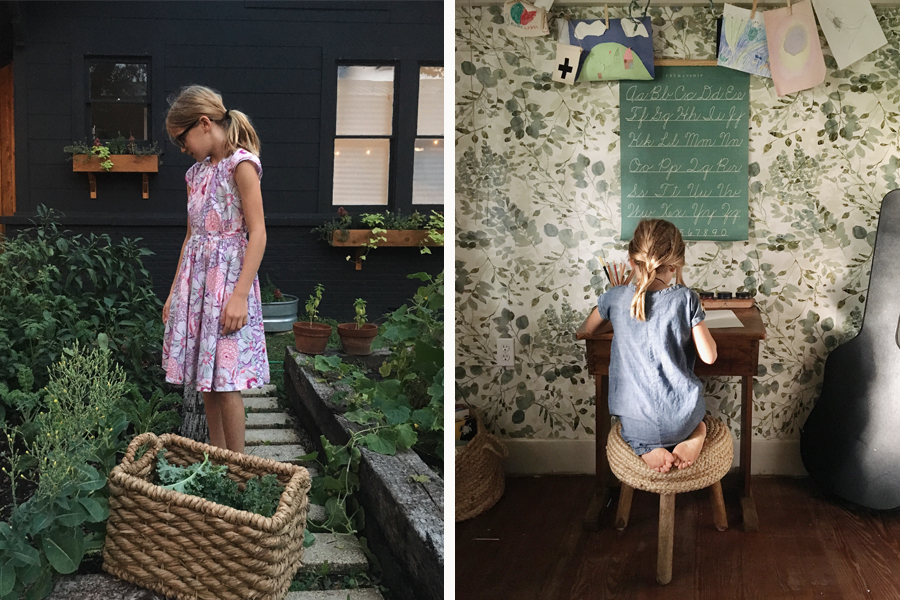
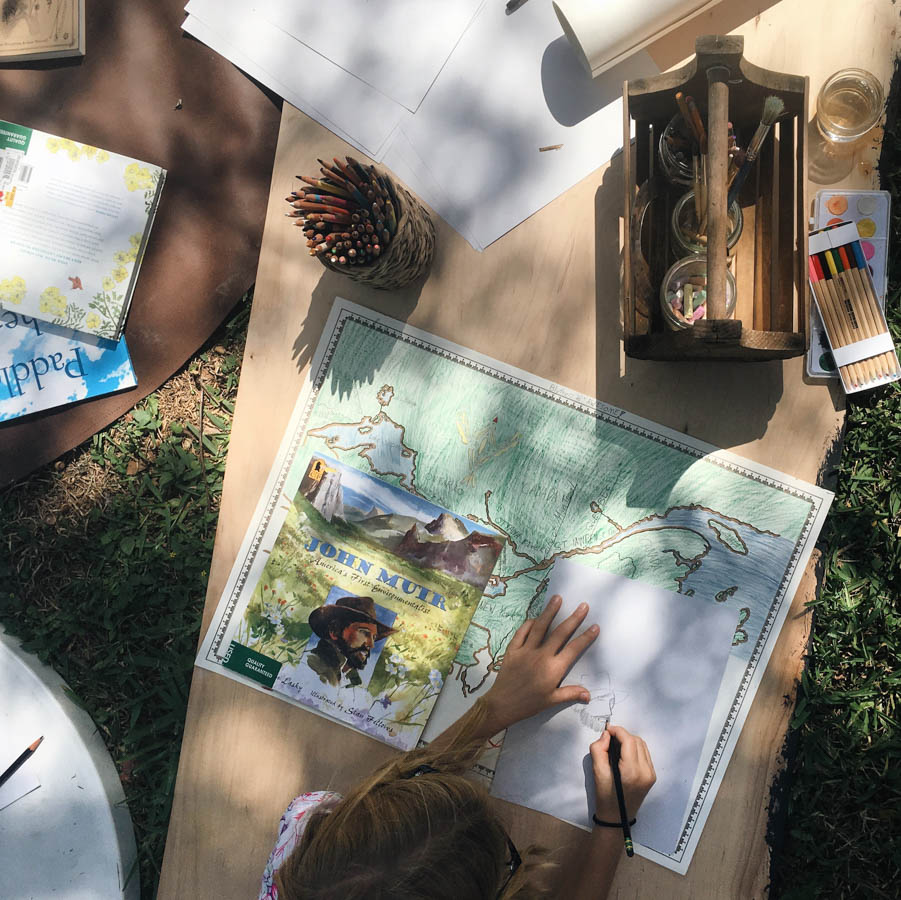 I know it’s mid-June, and most every parent in the northern hemisphere has already blocked last school year out of their brain and moved into summer. But I discovered a drafted blog post I wrote in the fall talking about our plans, rhythm, and resources. Don’t ask why I never posted it. But anyway, I’ve tweaked it, more as a reflection of the past year, a broad reflection, to give you a better idea of how our year looked and our favorite resources. I had also begun a Civil War/slavery resource guide in the Spring, based on books our family read this year. Would that be helpful to share, too? Can you tell I’m recovering pace and reflecting right now? Wink. Either way, enjoy!
I know it’s mid-June, and most every parent in the northern hemisphere has already blocked last school year out of their brain and moved into summer. But I discovered a drafted blog post I wrote in the fall talking about our plans, rhythm, and resources. Don’t ask why I never posted it. But anyway, I’ve tweaked it, more as a reflection of the past year, a broad reflection, to give you a better idea of how our year looked and our favorite resources. I had also begun a Civil War/slavery resource guide in the Spring, based on books our family read this year. Would that be helpful to share, too? Can you tell I’m recovering pace and reflecting right now? Wink. Either way, enjoy!
I have shared here and on Instagram thoughts about doing less in our homeschooling, about not having to accomplish everything in a day, a week, or even a year. I wanted to expand on that thought a bit here, too, as it feels ironic considering we were doing far more this last year than any other. What I mean is I would love to go back in time and assure that young, uncertain mother: it’s okay to not do everything right now. Now that my children are older and the oldest three are confident, independent readers, with my fourth also now entering more fluency, I understand how their capacity for learning has increased and blossomed and how my own has too. We can do more, not from a place of striving to do more and check off subjects, but because their natural capacity and curiosity has grown. For young families on this journey, please don’t belittle the power of quality play time, outdoor exploration, read aloud, and artwork. They take in SO much and all of you will enjoy the learning even more than tons of assigned paper work. Encourage your child’s love of reading as much as possible, as it will be the greatest asset to future learning of any sort as they grow.
It is difficult to discuss the way anyone chooses to educate their children without first acknowledging the temperament of the family members, and also the culture of the home. Some parents are more relaxed and some tend to worry. Some need high structure and others prefer to move on whim. None of us can be all or do it all. Nor do we need to. After the first five years of homeschooling, working to fit several wonderful curriculums into our day and cover all the subjects, I burned out and was even ready to throw in the towel altogether. I didn’t sense any of the creative freedom I had once imagined and prized in homeschooling. I felt boxed in by my plans and our segmented studies. I felt frustrated and grumpy. Exhausted and overwhelmed. Some of this had to do with other stressful circumstances our family was navigating at the time. My children seemed to be happy, but for the first time I wondered whether I actually had the capacity for homeschooling any longer. That was three years ago. We looked at school options for our children again, and once again did not feel peaceful about any of them. Instead I took a less obvious route and ditched almost everything we were doing: our weekly homeschool group with other families, my job tutoring other students, extra-curricular activities, and most formal curriculum. Although I still began the year with some plans and ideas, we paired down to formal lessons in only reading and math for the year and added space and time for more flexible read aloud, art, and outdoor play into our day again. I said no to a lot of my personal work and opportunities (so hard!) and most of my formal plans went out the window. I learned instead to listen to the needs of our home, to listen to my own soul’s needs. Over the course of that initial year, my heart began to grow and I fell in love with homeschooling again.
In the last three years, here’s what I’ve learned about myself and our home: I won’t stick too closely with rote plans, even the best ones. I love the hands-on approach of Montessori, the seasonal attentiveness and artwork/handwork of Waldorf, the literature in Charlotte Mason, and the skeletal strength of classical education––and I’m learning better all the time how to glean the things we love in each area. And of course, never belittle the quality of natural learning.

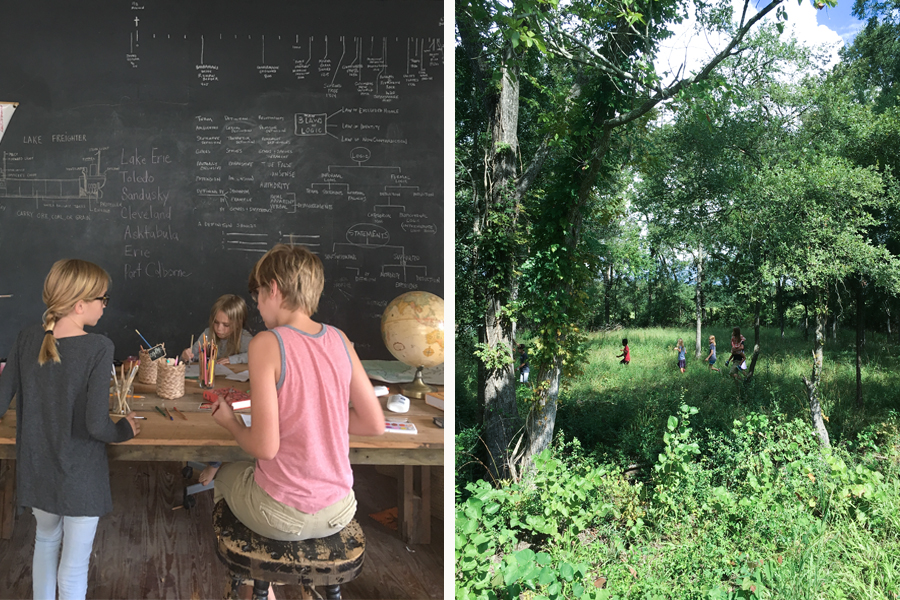

OUR CURRENT FAMILY RHYTHM
I realize it’s now mid-June, and many homes have already moved into their own summer rhythms, some choosing to put aside their formal learning for a while and others choosing an annual approach. I typically try to get a post of this nature out before the school year instead of near the end, more in sync with all the questions I receive about curriculum and routine, but I figured it might interest to some of you in the coming months as you think about your own home and homeschool. I’m also writing up some ideas and thoughts on our summer, too, since I have received many questions about what summer will look like for our family. So stay tuned.
Honestly, I wasn’t entirely sure what this last school year would look and feel like, as so much has changed for our home last year. To begin, Mark is now working from home and homeschooling the children in the morning while I work––(inserts: streamers and high fives for so many reasons). Liam just finished a Challenge B course with Classical Conversations at his request the year before for Challenge A, taking a once a week seminar-style class on his own with friends and learning so many new things and skills at home through research, writing, and discussion. The work load has been a big change for our home’s rhythm, but he loves it! My sister and her family recently moved down the street from us and also began homeschooling her younger children, so Olive spends an hour or so in the morning at her house down the street, practicing reading, handwriting, and playing. In the afternoon, her son Shepherd joins all of us for read-aloud, nature study, and mapping. This is a gift for our social seven/eight year olds, and a logistical help to both of us right now. And a few times a month, our family meets with friends for nature school, enrichment projects, field trips, and presentations of our week’s work––a way for them to play with and learn from friends and also share their work. The pace of our days have changed, but it’s good.
Writing this out, it sounds like we do a lot. A whole lot. But we don’t accomplish all of it in a day. Some things might not even happen each week. We have foundational skills each child works through daily, Monday through Thursday: Latin, Logic, and Pre-Algebra for Liam; math, spelling, handwriting, and independent reading for Burke and Blythe, and reading practice, math, and handwriting for Olive. Different books are often read aloud in the morning, afternoon, and before bed because we love it! And that’s it! Everything else [illustration, handwork, grammar, copywork and writing, mapping, nature study] feels like a wonderful bonus, and they cycle through our week in intervals, often only once or twice a week. Also many practices overlap with the other; for instance, the kids will sketch or paint or practice their handwork while I read aloud. We try to read books aloud that tell us about history, people, and different cultures. Those books serve as a springboard for other valuable self-directed activities, too. For younger families, take the pressure off yourself to do or study everything.

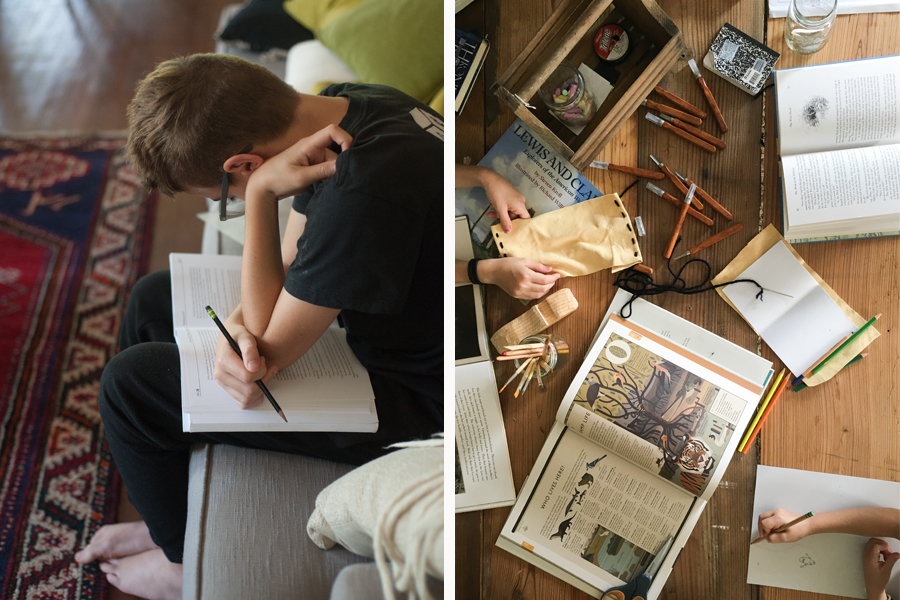
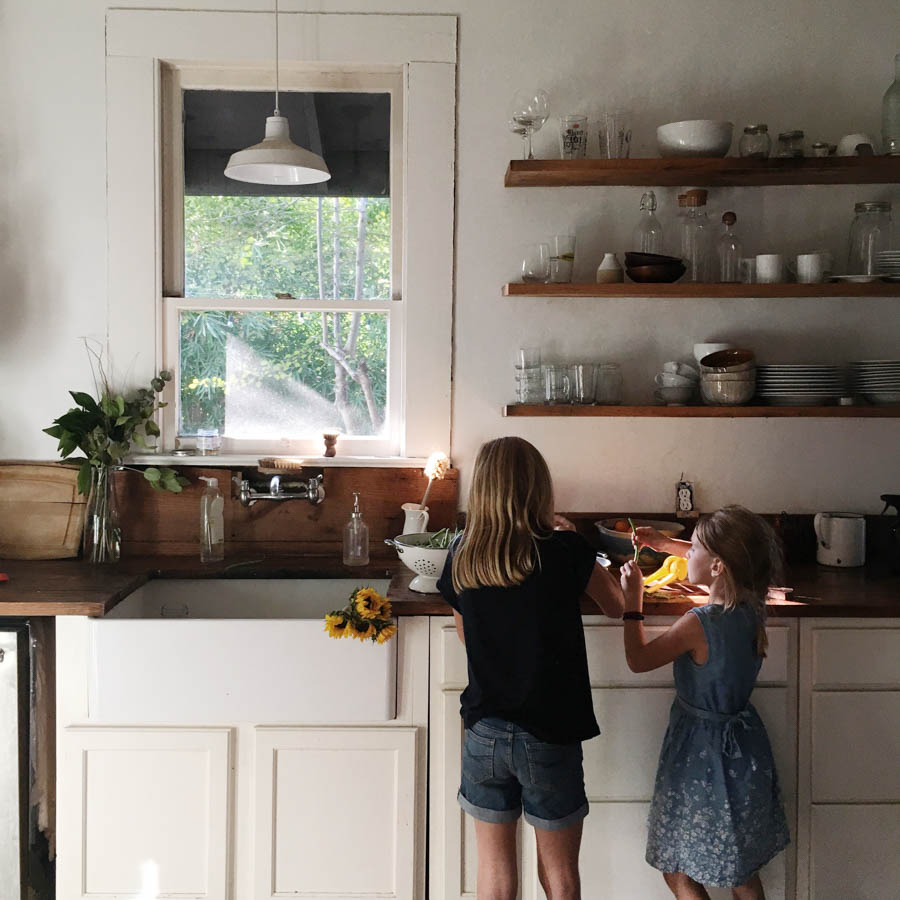
With four children spanning age 8 to 13, the skills and needs vary so much. I’ve learned so much about understanding home rhythms from reading about Waldorf and Charlotte Mason guides. Much of it is intuitive, but I’ve found it’s helpful to focus our routine around the energy and pace of our home rather than a particular subject. It is an art I’m still learning. Here’s roughly how our day rhythm was structured this last year, with resources included below.
8:00 am | THE MORNING TABLE a nurtured beginning
We do our best to begin at a consistent time in the morning, although it does flex a bit. We eat a simple breakfast together, read 1-2 chapters of the Bible together, practice memory work, and pray together. We try to bless our children into the day, briefly speaking something true and encouraging over them. I hope this beginning to our day will happen more often outdoors as the days begin to cool off. It always seems easier to wake up outdoors.
8:30 am | MORNING RHYTHM focus + independence
maths, logic, independent reading and read aloud (emphasis: 19th century history and literature), spelling, handwriting, play
For our home, it has always turned out well to begin with the work that requires the most focus and attention. After a full night’s sleep, our brains tend to be most alert. Coffee can help make up the difference for the adults. Wink. Young children and toddlers tend to be more calm and happy, too, making it easier to carve out a small window for a brief reading or math lesson with an older child or for self-directed play/learning. As mentioned, Mark leads this part of the day right now. They do not necessarily keep with a rigid schedule for the morning, although they tend to begin with math and carve out generous time mid-morning for read aloud in the backyard. In the morning this year, we read books aloud about or written in the 19th century––i.e., Of Courage Undaunted about Lewis and Clark; SALT: A Story of Friendship in a Time of War about friendship and the war of 1812, Frankenstein, and more about Commodore Perry, Napoleon, Queen Victoria, and several books surrounding the Civil War this last Spring.
Burke and Blythe also have a mixture of assigned and self-selected independent reading covering the same time period, which they find time for at some point in the morning, often while Mark is working through a Logic lesson with Liam. Burke and Blythe are also responsible to read aloud to Olive a bit each day, a way for them to practice their own intonation and storytelling and also connect with their younger sister. All of our children struggle with spelling––don’t ask why––so it’s something we try to practice a bit each day.
We give each of our children a lot of flexibility in how they work through their more intensive morning work, but we strongly encourage each to respect one another’s work and to pay attention to what others are doing when you enter a space. At age eight, Olive has the least amount of independent work, so we encourage her to self-directed play, handwork, or art while she waits for a playmate. She also spends an hour or so at my sister’s each morning for a reading lesson with her cousin and free play, which is such a gift for her social self. Throughout the day, we encourage a lot of play, and when Mark or I notice any of the kids struggling to focus, we tend to send them outdoors to romp around a bit, to get their heart pumping and lungs breathing deeply.
NOON | THE RESTING TABLE an intentional pause
We keep meals easy at lunch, often sandwiches or leftovers or bento-style, and everyone makes their own. At this time I try to wrap up whatever I’ve been working on and swap roles with Mark. We try to clean up from the morning, although that doesn’t often happen, and also save texting and emailing for this time.
1:00 pm | AFTERNOON RHYTHM exploration + expression
read aloud of children’s classics and the Holling books, handwork, map work, painting, nature study, grammar, writing, Latin, play
After lunch, there’s always a different sort of energy, more erratic and noisy, so we save the more expressive and active learning for this time. Since our home is no longer a napping home (insert: tears), we try to help the kids notice when they need quiet or a break from the crowd. Mark built a few tables for Liam’s party, and we moved one inside to replace the old preschool sized table before it. I keep a pile of our favorite illustrated nature books there with a wooden tote of colored pencils and paint brushes and a stack of thick cardstock nearby on the shelf. We don’t have much formal nature study, so I encourage them to flip through the books and sketch/paint whatever interests them while I read aloud ( The Wind and the Willows, Dicken’s A Christmas Carol, Little Women, or books from the library). On the charmed weather days, we’ll take the wooden tote and nature books to the backyard to sprawl out on blankets, using a slab of plywood for a desk surface. The kids might also carve wood or weave during this time, too.
One day a week, instead of The Wind and the Willows, we read a bit of a Holling C. Holling book, using the book and this study as a guide through US geography. We read and mapped Paddle-to-the-Sea , Tree in the Trail, Minn of the Mississippi, and Seabird. It was wonderful! Several people have asked me about the maps we used, and I highly recommend them. I didn’t purchase them at first because of the expense and also the want for my children to create their own maps, but I changed my mind in the first few weeks and am so pleased! They’re beautiful and large enough for all age groups. And my kids love mapping!
What happened after this depended on the day, my energy, and the spirits in the home so it’s hard to write out neatly here. Sometimes we stop after read aloud. Sometimes we go for a walk or to the park. Sometimes we meet up with friends. But I tried to practice writing with the youngest three and my nephew once or twice a week, as it is a foundational skill of expression:
Burke + Blythe | In the fall, one to two days a week, I pulled a couple of sentences from whatever they read that day, dictated one sentence each for them to write on our chalk wall. We parse it together and discuss the parts of speech and jobs of the words. It takes 10-15 minutes. It’s a natural and brief extension to our reading and a preparation for when they begin foreign languages. One afternoon a week, they write a paragraph or two about their reading (any reading). I often help them draft an outline and they write it on their own and I revise it with them. I’m not using a formal curriculum for any of this, but if you prefer one, I highly recommend English Lessons Through Literature for a gentle approach to language, which I wrote more about here (diagramming begins at level 3). Also, the Institute for Excellence in Writing (IEW) has a geography-based writing curriculum that compliments the Holling Geography study.
Olive + Shepherd | Two afternoons a week, they copy a couple of sentences from our reading and illustrate it. We tried to organically discuss parts of speech, but I let that go sometime in the fall. We stuck to writing and illustration primarily.
Liam | Liam did much more of his work independently this year. In the afternoon, I quizzed his Latin vocab or checked his translation/parsing, read his writing and helped him think through his composition/research papers. This often times might happen organically during dinner meal-prep or in another setting.
4:00pm | CLEAN-UP
5:00pm | MEAL PREP + PLAY
6:00pm | THE EVENING TABLE unwind + reflect
We each share our best/worst part of the day, and often eat with another family or friends. The kids play afterward and we bathe and have read aloud. We’ve read the entire Wingfeather Saga this last year and loved it! We’re finishing book four this month. I highly recommend it for family read aloud.
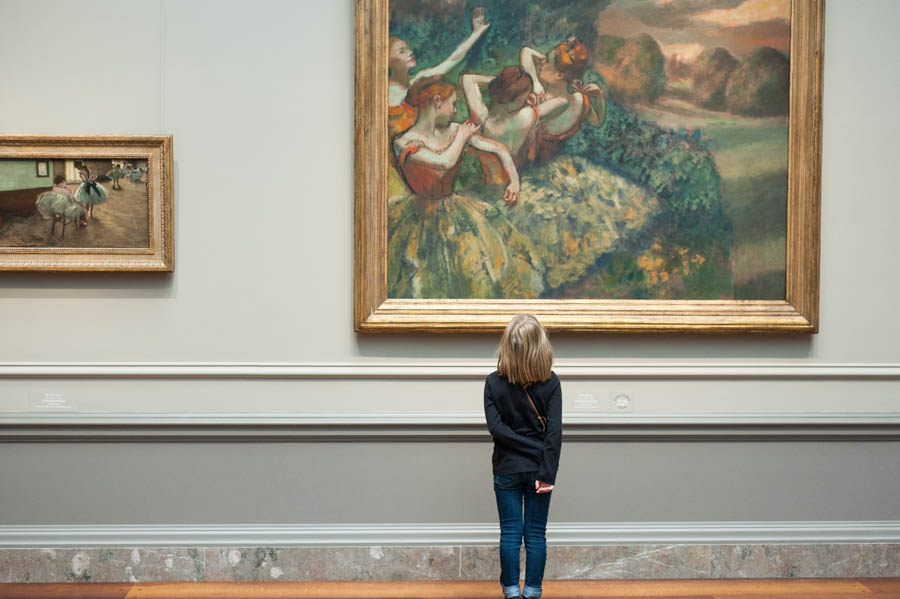
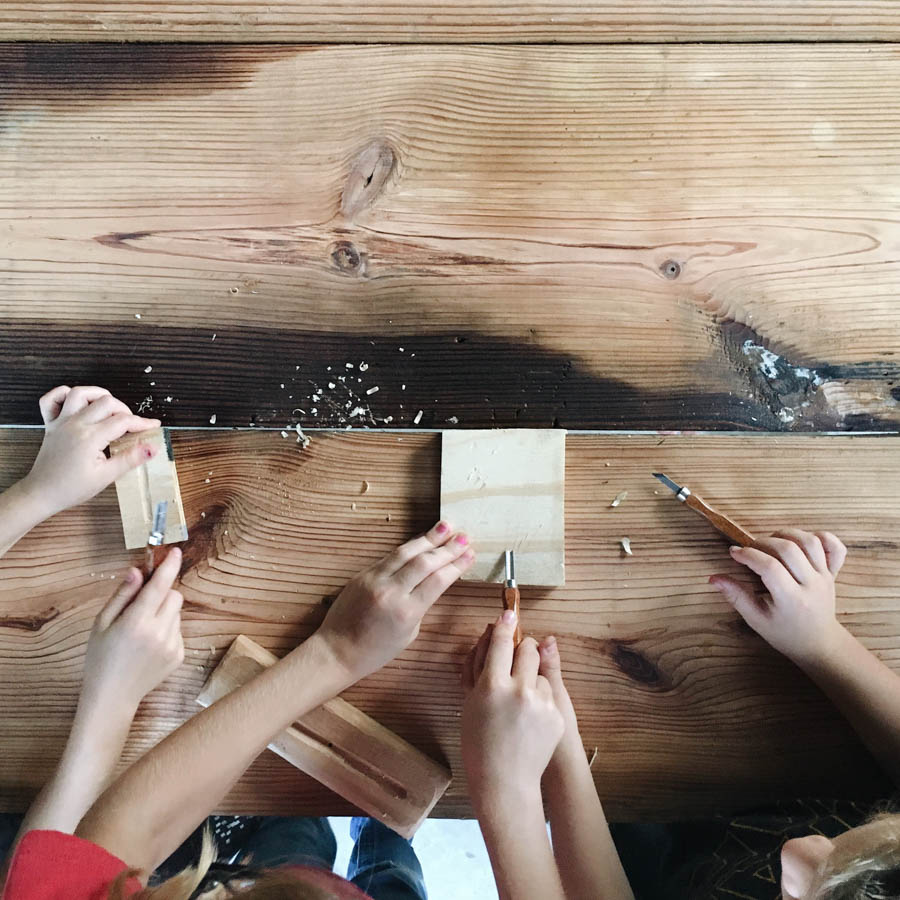
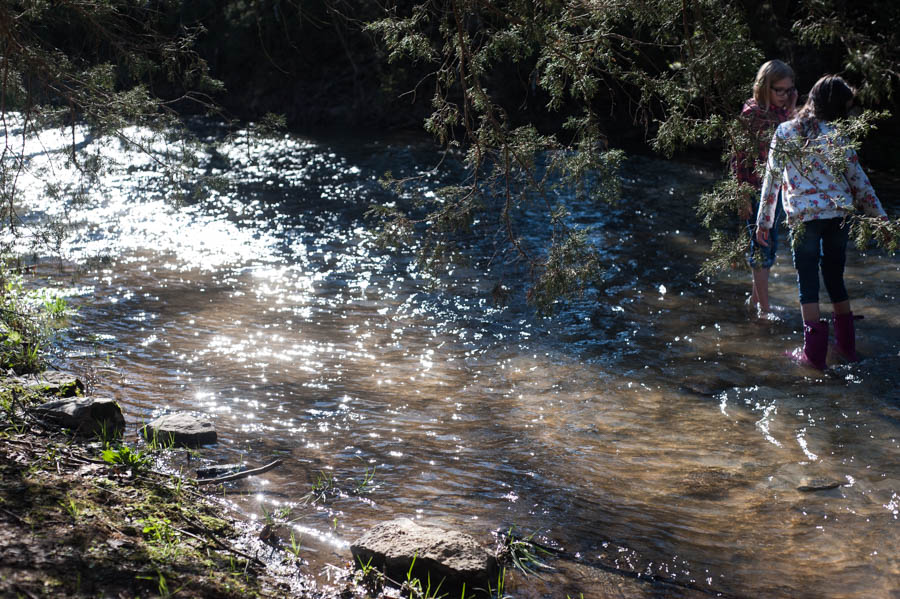
RESOURCES
math | Saxon math for all the kids. It’s rote and straightforward, but it works for us. If you have younger children, here’s something I wrote about introducing math concepts without a curriculum. If teaching math overwhelms you, I also recommend Teaching Textbooks as a helpful alternative.
reading lessons | My sister is using All About Reading with the kids, which is wonderful if you or your children love all the activities. Last year I used Reading Lessons Through Literature and loved it. I did fill in the gaps in places where I felt she needed extra practice.
read aloud and independent reading| reading lists from Tapestry of Grace, Ambleside Online, and our own personal love of literature and research
spelling | word lists from Reading Lessons through Literature; also recommend All About Spelling
geography | Beautiful Feet Books
writing + grammar | taken from reading
nature study | exploration + quality nature books
extras this year | canoe trip, apiary, participated in A Christmas Carol play, seaside daytrip, trip to Gettysburg and Washington DC, flower studies


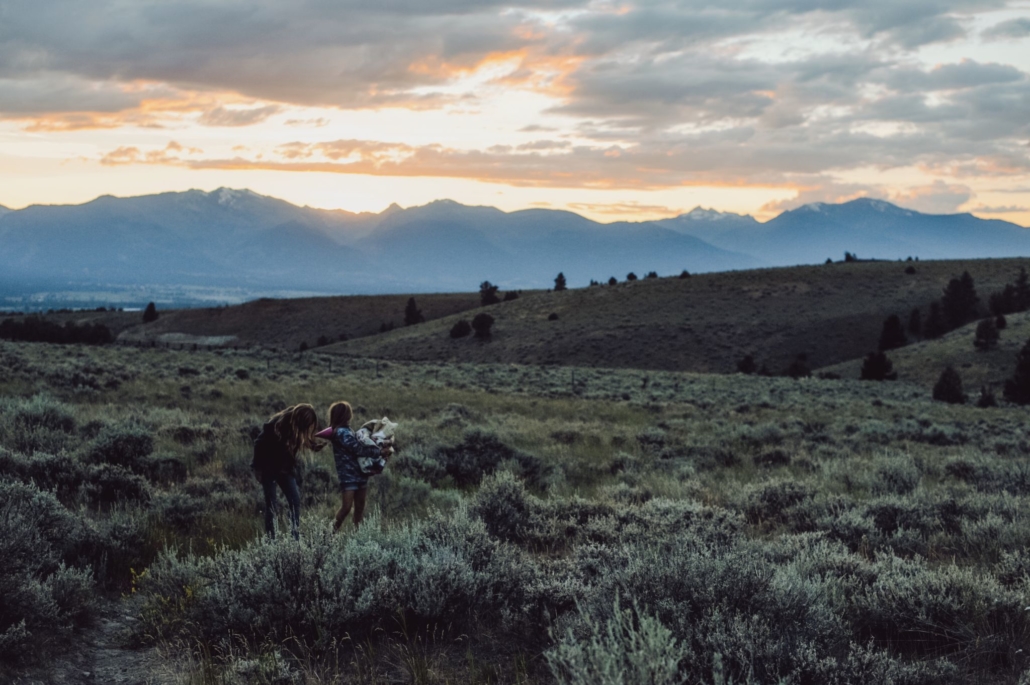
Comments
Thank you for the inspiration as I began our new school year! I feel like your schooling style is very similar to what I’m aiming for and I always love your posts. Can you share where the green handwriting poster came from?
Pingback: Beginning Again | Our Resources for the New School Year - Cloistered Away
THANK YOU. THANK YOU. THANK YOU.
Thank you for sharing your experiences. They are a rich source and guide!
You’re welcome, Jessie!
This was so helpful to me as I tend to worry and stress and be hard on myself for everything I haven’t done or haven’t done well. I just ordered a science curriculum since we had nothing last year. We did Saxon math with my oldest last year and Singapore Math (Primary Math) with my elementary age kids, and they both worked very well for us. We are on book two of Story of the World with them and they love listening while drawing or coloring. I started using English Lessons Through Literature on your recommendation last year, and it was sooo much better and less stress-inducing than First Language Lessons and Writing With Ease. Neither of my daughters liked that curriculum, even though I had high hopes for it since it was coming from Susan Wise Bauer and Jessie Wise. I don’t have the level of involvement and consistency that you do, and want to work up to it this year! Thank you for the encouragement and glimpse into how your day plays out. So helpful!
I just wanted to hop on and say thanks so much for including so much about what parents with young children can do. That was immensely helpful to me! I have a 3 year old (and a 5 month old) and am planning on starting to unofficially homeschool next week :) We’ll see how it goes – I’m not putting pressure on her: if she isn’t into it, we’ll stop and wait.
Thanks so much again
Hi Bethany! Thanks for writing. Your posts on homeschool always help me relax and boost my confidence. Do you do any other more formal science study besides nature study? Do you think that is necessary? Also, I use many of the same books as you for guiding our studies and worry that my kids won’t be able to take tests well, like ACT, SAT, or placement tests because they never practice these types of questions. Do you have an opinion about this? (My four are 8, 6, and twin 2’s). Thanks!
Hi Jami! We’ve never used a formal curriculum for science, although we’ve watched so many documentaries and checked out so many library books over the years. Science is intrinsically about curiosity and discovery, so I think it’s nice to let the kids lead in this area. That said, there are many science curriculums for early years, too. Liam will be studying Physical Science this year with a textbook and he’s ninth grade equivalent, if that helps as a frame of reference. And don’t worry about standardized tests. There’s plenty of time for learning how to fill in a scantron, read directions at the top of a booklet, sit quietly in a desk, etc. When your kids are older, homeschoolers can take the Standford 10 (private schools use) for practice, too. They begin at first grade, but I just don’t think it’s necessary for kids to learn test taking skills that young. These are of course all my opinions! ;)
I so appreciate reading this! I have three (7,5 and 1) and am gathering ideas for next year. The focus on play and organic learning was so good for my overwhelmed heart to read. There is time to do everything. =) We tend towards a very simple backbone during the days already and I liked reading how your days played out.
Simple, organic days are salvation for the little years. Enjoy them! xx
Thank you so much Bethany for this post, it was wonderful and insightful! I too agree, this is something perfect to read during the summer which is usually (or eventually lol) a time of reflection, planning, or decision making in regards to the upcoming homeschool year if you begin in the Fall ;) You have definitely given me food for thought and some things to reflect on. I always love your posts and look forward to what’s coming next! Enjoy your summer with your beautiful family :)
Thank you, Jessica! Yes, we’re approaching the year more whole-rounded this year, and I’m loving it! We took most of June off and are beginning our routine again in July, which seems just right. I like being able to take longer breaks during the year, like when we traveled in March or have an unexpected event. I’m so grateful this little space has left you with something to nibble for your own home. Much love. x
Bethany, thanks for sharing. Your posts are always refreshing and helpful. As a mother with young ones (7, 5 and 2) I find myself between the camp of wanting to incorporate all the wonderful things I see while being diligent to build the necessary skills my little ones need. It can feel daunting at times to do it all. Your post has brought a much needed perspective and I really appreciate it. One part of our homeschool that I’ve been pondering is history. How important is it to start with Ancient history, should I combine all my kids as they get older? I plan to use Ambleside as a guide next year but also feel overwhelmed as I move forward with all different years in history. I would be curious to hear any thoughts from your experience in this area. Thank you!
Thank you, Anna. We all need reminders we’re not alone in this journey, don’t we? As for history, we began with Ancient history and seemed to camp there for a while in the beginning. My boys loved ancient history and mythology. But I’m not sure it’s necessary for everyone to begin there. I didn’t have a very strong history background, so it was helpful for me to begin with the ancients and sort of move forward from there. I remember studying Ancient Lit in university and loving the comparison of creation myths to my own belief system and also understanding more of historical context for Greek and Roman culture. I was so fascinated by how little I knew of the world’s history. My boys love history, so it’s always sort of directed our studies. If you’re not wanting to focus on the ancients for read-aloud or study, I highly recommend Susan Wise Bauer’s Story of the World as an approachable and concise history for littles. Volume 1 (ancient history) is made for your oldest children’s age group, and they may enjoy simply listening to the audiobook, too, during handwork or quiet play. Jim Weiss is a fabulous storyteller. I would play it in my boys’ room while they played with Legos or worked on an art project. We still reference it now. I hope that helps!
Thank you for writing this now during the summer months. I love to take July and August to glean new curriculum choices for our next homeschooling year. We are on our 14 year of homeschooling and there is definitely an ebb and flow to our years schooling.
I’m doing the same things right now, Michelle. I prefer having a bit of space to let what is done breathe a bit, and also to pray and talk with Mark and the kids about what’s to come. Ebb and flow is such a fitting term, isn’t it?
Hello,
Lovely blog you have here :)
This resonates with me much.
Btw where did you purchase the wood stuff that you’re children are working with. My 6 year old son keeps destroying wooden toys because he wants to make them “better”. So I was thinking of buying him some sort of wood kit he can mess with.
Thanks!
Thank you, Faith! And yes, I think basic wood carving and tinkering is perfect for curious hands. Each of our children have this knife, which I love for the finger guard. Little ones of course needs lots of supervision while they’re learning proper ways to hold a knife and and ways to carve, etc. We also have this set of wood tools which the kids love tinkering with, as well. They’re more for detailing and some of the tools can be quite sharp, so again, you’ll want to keep them in a special spot to take out during supervision. ;) But I think they give a different feel, and help children interact with the wood differently. If you’re concerned about fingers, I’d also consider a finger or hand protecting glove. Have fun!
I always love reading your homeschooling posts, Bethany! I’ve been considering purchasing some Beautiful Feet & Saxon math books… You just gave me another reason to do so! Thank you for sharing what works for your family!!
I’m so glad to hear this, Christa, and you’re welcome! Beautiful Feet Books are wonderful, and Saxon, although it can be tedious at times, has been quite thorough. The older years also have accompanying DVD instruction for parents who feel overwhelmed with the teaching aspect.